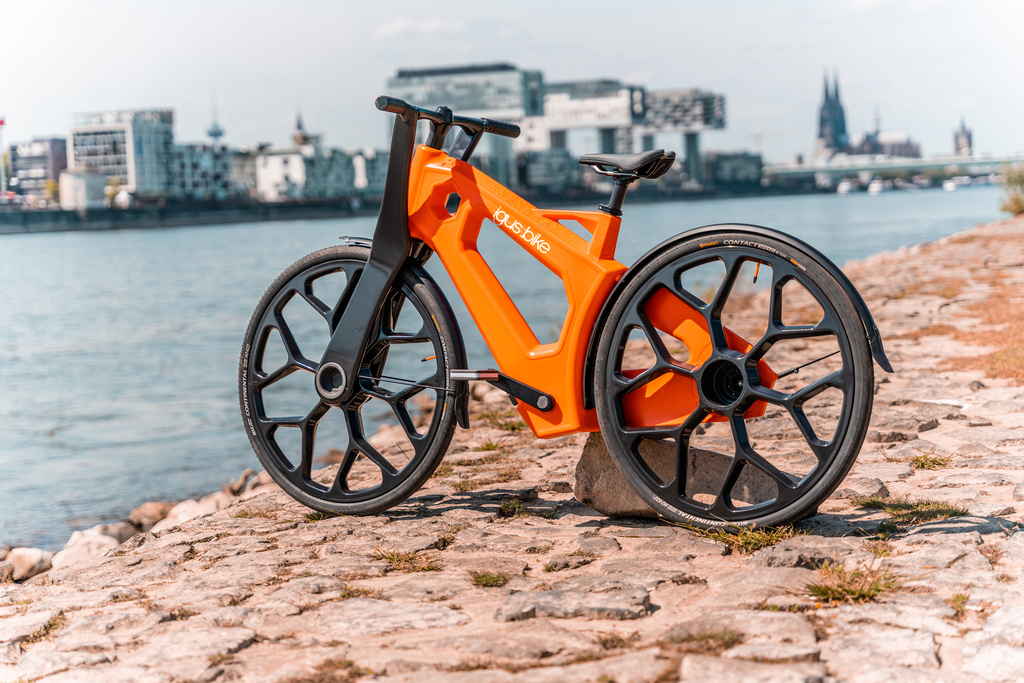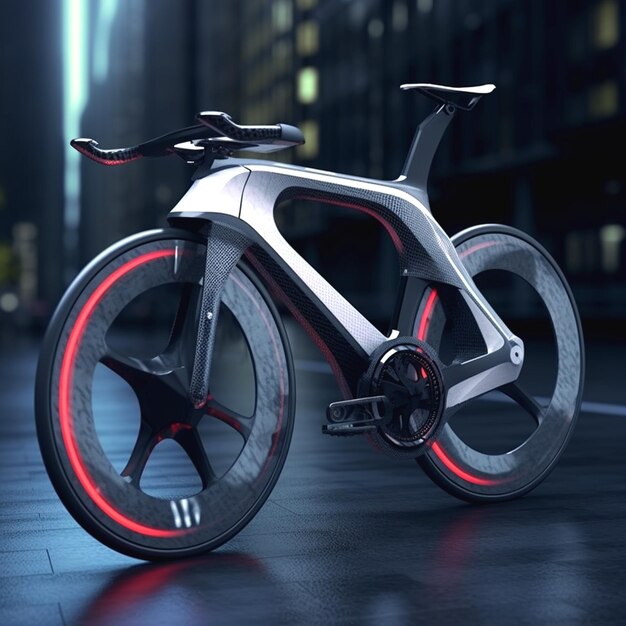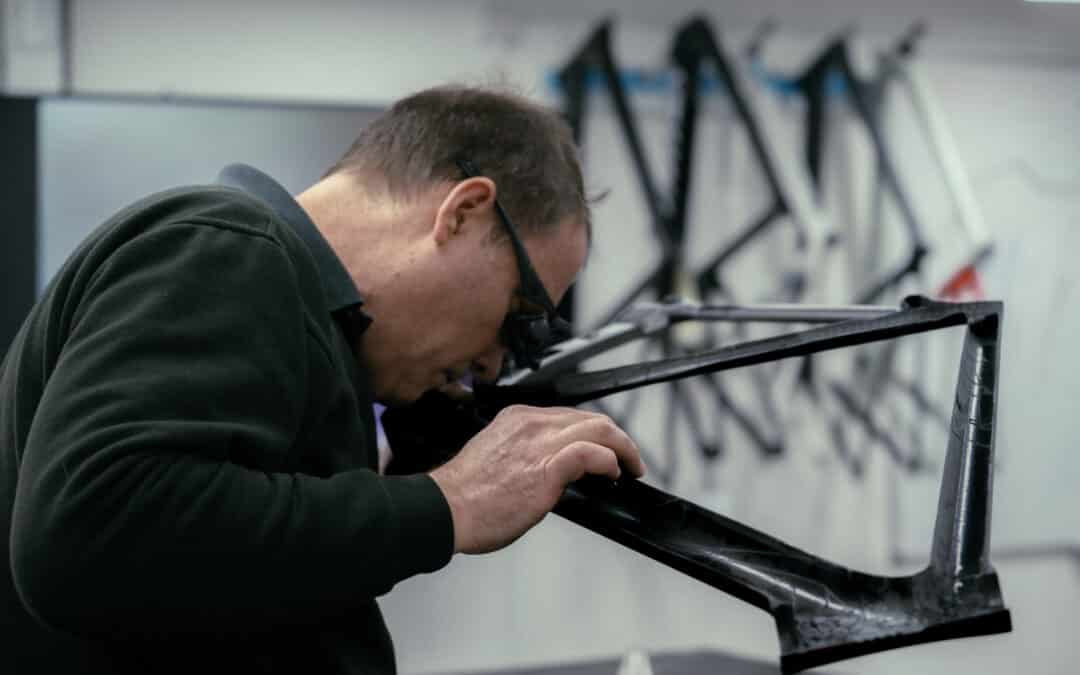Thermoset vs. Thermoplastic: What’s the Difference?
There are basically two types of carbon composites: thermoset and thermoplastic.
Right now, thermoset composites dominate — they make up nearly 99% of carbon bike frames on the market. This is the traditional method: carbon fibre sheets are laid up and cured using an epoxy resin. This resin is what’s known as the matrix — it binds the fibres and gives the frame its shape, stiffness, and light weight.
But there’s a downside. While epoxy provides rigidity and a great strength-to-weight ratio, it’s notoriously brittle under impact. When a thermoset frame takes a hit, the resin can fracture internally. These micro-fractures can cut the carbon fibres like dental floss — a severe limitation that compromises robustness.

Igus Thermoplastic Bike – Image from controlsdrivesautomation
Enter Thermoplastic Composites
Thermoplastic carbon works differently. Instead of an epoxy resin, the matrix is made of a plastic polymer. These polymers are heated and compressed to much higher pressures, creating a very dense laminate which is almost not a laminate or composite in the traditional sense of the word. But here’s the key: they don’t shatter, unlike thermoset resins.
That means:
- Better impact resistance — the matrix can flex instead of shatter.
- Stiffer and lighter — a more compact pure carbon product.
- True recyclability — old frames can be reheated and repurposed.
- More durable and repairable — fewer hidden fractures, and as repairable.
Thermoplastic composites aren’t new — they’ve existed for decades. But until recently, they just couldn’t match thermoset carbon for weight and stiffness — two non-negotiables in high-performance bikes.
Therefore we advise on glaring and not-so-obvious potential structural failures as well as performance and maintenance improvements. Another important benefit is batch testing to ensure problematic bikes are identified for reasons only identified by design tweaking and poor governance at the factories.
As mentioned previously, a large part of our evaluation process includes application techniques on finishes and special effects such as candy, metallic, flip paints, matt or heat application decals and foil based decals. This can be a very real issue for the brands. We assist in finding practical solutions from our experience as bike restorers.
So it is fantastic that Carbon Bike Repair’s exposure to many good and bad ideas are being recognised as valuable support and not criticism.
What’s Changed?
This year, I attended the JEC World composites exhibition in Paris. There, I met a small but groundbreaking company out of Belgium called Rein4ced.
What they showed me will change the bike industry forever, in my opinion.
Their thermoplastic carbon trial frames are lighter and stiffer than traditional thermoset ones — and, crucially, far more resistant to impact. Upon collision, the matrix flexes rather than fractures, ensuring the frame maintains its structural integrity even after sustained impacts. This does not mean they cannot break, but it represents a vast improvement in every area.
And yes — these bikes are just as repairable as their thermoset counterparts.

Sustainable-modular-recycled-plastic-bike_disc-brake, image by Muzzi-Cycles
Why This Matters for Cyclists
This is more than just a material science breakthrough — it’s a win for riders.
- More durable bikes that can take abuse and potentially bounce back to shape.
- Better value — longer lifespans, more resilience, fewer catastrophic failures.
- Real sustainability — thermoplastic composites can actually be recycled, opening up possibilities for reuse and waste reduction.
- New design freedom — manufacturers can push boundaries with how frames are built.
The Bottom Line
The carbon bike as we know it is about to evolve — in a big way.
Just like we once said goodbye to steel and embraced carbon, we’re now looking at the next leap forward. Thermoplastic bikes are real, they’re coming, and they’re going to change the game.
You read it here first.
Other Case Studies








